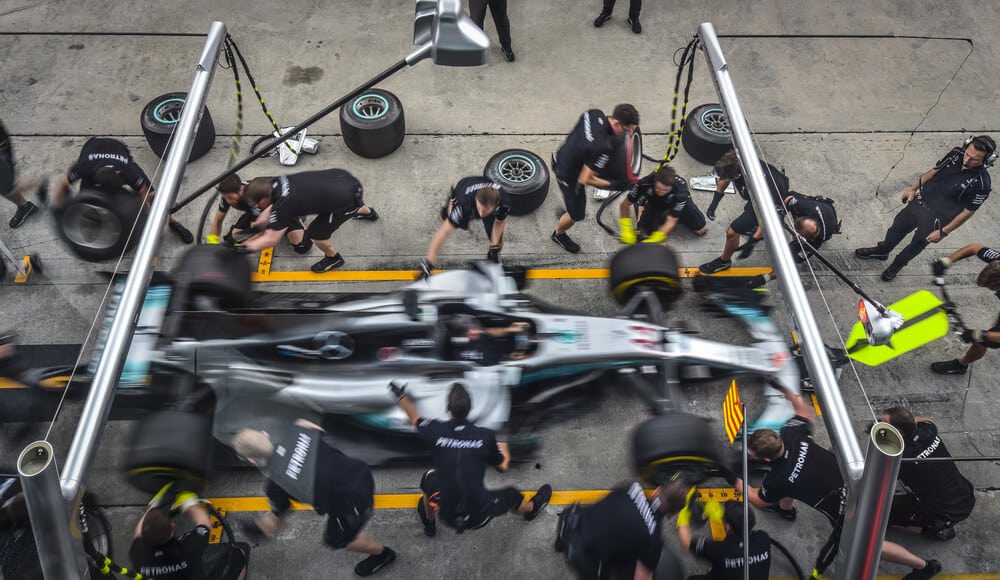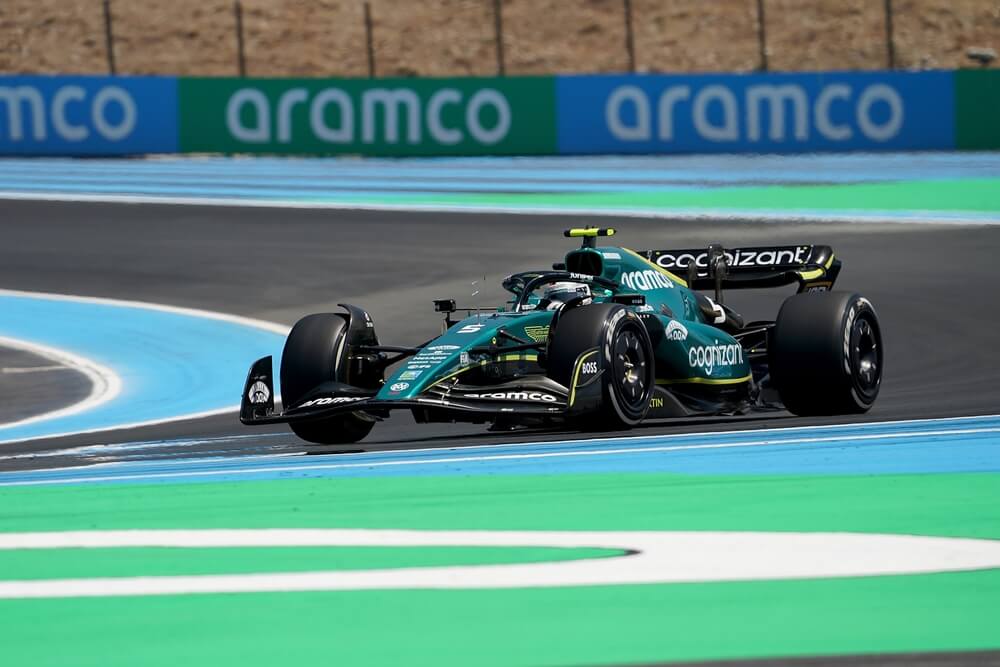We all know that Formular 1 is an elite and expensive sport. If you’ve been following Formula 1 for a while, you’ve probably noticed that there are always new teams trying to join the sport. After all, who wouldn’t want to be a part of the most popular motorsport in the world?
However, joining F1 is no easy or cheap feat. In order to even be considered, new teams must prove that they have the financial backing to compete at the highest level. In addition, teams must also have access to the best facilities and equipment in order to be competitive. So, just how much does it cost to start a new F1 team?
In this article, we’ll explore that question in depth and try to give you a better understanding of the cost of starting a new F1 team.
Table of Contents
Watch this video to learn more about how much it costs to start a new F1 team.
How much does a new F1 team cost?
If you want to start a new F1 team you should have around $400 million. This will get you a basic entry into the sport. It includes the price of the cars, engines, and entry fee to race.
First of, you have to have a budget to even be considered to start an F1 team. The minimum amount is $200 million as the FIA and FOM have agreed on a minimum entry fee. In addition, there are annual team running costs that can range from $145 million per season.
But that’s not all, you also need to account for the cost of your drivers. Depending on the quality of the driver, it can cost a few million dollars up to tens of millions. So when you factor in all the costs, it can be quite expensive to start an F1 team from scratch. Nevertheless, if you start well, it can be profitable in the long run.
Related article: Read more about how much it cost to host an F1 race.
Key takeaways
- A new F1 team can cost around $400 million.
- The minimum amount to even be considered to start an F1 team is $200 million.
- There are annual team running costs that can range from $145 million per season.
- In addition to the entry fee and annual running costs, you also need to account for the cost of your drivers.
- Despite the high upfront cost, starting an F1 team can be profitable in the long run.

Understanding why it’s so expensive to start a new Formula 1 team
There are different checkboxes that has to be marked in order for a new team to be given the green light and be allowed to compete in Formula 1.
The FIA, who is motorsports’ governing body, is very thorough when it comes to safety and making sure that all teams who wants to join the F1 grid can actually afford it and have the right equipment. This is to ensure that the sport is as safe as possible and that all teams are on a level playing field.
Entry point
Now, you can’t just show up to the FIA and say that you want to start an F1 team. There’s an entry point for all new teams who wants to join Formula 1. As we mentioned earlier, one of the main reasons why it’s so expensive to start an F1 team is because of the entry fee. In order to even be considered, new teams must pay a $200 million entry fee. This is just for the right to race!
It is done to ensure that all teams who wants to join the sport can actually afford it. The FIA doesn’t want teams to enter the sport and then go bankrupt after a few races because they can’t afford to continue.
Annual running cost
Now, it doesn’t stop there. You have got your entry pass to race but you need to account for the annual running costs, which can range from $145 million per season. This include the costs for the cars, engines, and access to the best facilities and equipment.
You need to have a budget for your team of engineers, mechanics, and other team personnel. In addition, you need to account for the cost of travel and accommodation for all races.
Driver’s salaries
Now, one of the biggest costs associated with starting a new F1 team is the driver’s salaries. If you have been following F1 for a while, you know that some of the best drivers in the world command very high salaries. For example, Lewis Hamilton is currently the highest paid driver in Formula 1 with a salary of $40 million per year.
As a new team, you need to account for the cost of at least two drivers. Now, it’s up to you whether you want to sign established drivers or young up-and-comers. Depending on the quality of the driver, it can cost a few million dollars up to tens of millions.
Executive’s salaries
There’s another big cost that’s often overlooked and that’s the executive’s salaries. In order for a team to be successful, you need to have a good management team in place. This includes team principals, engineers, and other personnel.
These people command very high salaries because of their experience and expertise. For example, Toto Wolff, the current team principal of Mercedes, is rumored to be earning $10 million per year.
So, as a team owner, you need to account for the cost of hiring a good management team. This can easily add up to your overall budget of starting a new F1 team.
If you want to start a new F1 team you should have around $400 million. This will get you a basic entry into the sport. It includes the price of the cars, engines, and entry fee to race.
Understanding how F1 teams make their money
Now, you must be thinking that with all these costs, how do F1 teams even make money? I mean, sure, the top teams like Mercedes, Ferrari, and Red Bull are all making a lot of money but what about the smaller teams?
There are generally different ways that F1 teams make their money. Let’s take a look at each of them:
Sponsorship
Since F1 is a very high-profile sport, there are a lot of companies who are willing to sponsor teams. They do this in order to get their brand name out there and be seen by the millions of F1 fans around the world.
Depending on the size of the team and the quality of their results, teams can easily rake in a lot of money per year just from sponsorships. For example, Mercedes charges Petronas $70 million just to have their logos on the car.
On average, a team has between 15 and 25 sponsors that pay to have their logo shown on the car. The better-performing teams will have more sponsors since they are more marketable and receive more attention on television. It is especially true that sponsors would avoid a team or driver with a poor reputation.
Investment
Several manufacturers, including Mercedes, Ferrari, and Aston Martin, support their own racing teams, which are aptly named “factories” since they are on-track extensions of their road cars.
In 2019, the AMG Mercedes F1 Team received 80 million Euros from Daimler, the German giant’s parent business, to create and perfect the car that will compete in the championship.
This money is an investment by the manufacturer into the team for research and development (R&D) that will eventually trickle down to their regular cars. It’s a way for them to stay at the forefront of technology and maintain a competitive edge.
Driver-Related Earnings
Finally, driver-linked income is when a driver pays the team a quantity of money to drive the car, such as Lance Stroll, who paid Williams $30 million to drive the car in 2017. This only happens in teams lower down the grid that are yearning for more income.
This is something that fans despise because it allows many undeserving drivers to join the team while excluding many talented drivers.
Some other ways that teams make money include prize money, hospitality, and television rights. These are also important sources of income for teams but they pale in comparison to the sponsorship and investment money that teams receive.
Frequently asked questions
Is owning a F1 team profitable?
Can you start a new F1 team?
Is there a cost cap for Formula 1 teams?
How much does an F1 car cost?
Conclusion
So, there you have it – the costs involved in starting a new F1 team can be quite substantial, but there are many ways to maximize your earnings and turn a profit. Whether you’re a major manufacturer or a smaller team, there are many opportunities to capitalize on the popularity of Formula 1 and make your mark in this exciting and competitive world.



